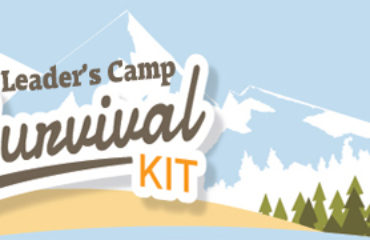If you have ever spent some time on a farm in the Midwest you probably have heard of the phrase “crop rotation”. It is a concept farmers have learned many many years ago. Crop rotation is an agricultural practice where different types of crops are grown sequentially on the same plot of land across several growing seasons. Farmers have learned that rotating their crops and not planting, let’s say corn, on the same field every year improves solid health, optimizes nutrients in the soil, and manages pest and weed populations naturally. If corn is planted in the same spot year after year the same bugs and weeds are produced, and the same nutrients are pulled out of the ground until there is nothing left. But each plant has different needs from the soil and some even put nutrients back.
Offering a short-term mission trip rotation to your youth ministry does something similar. By having a rotation strategy where you are planning years ahead for your next mission trip rather than just planning your next one increasing the chance for a bigger harvest, so to speak. This idea of offering a rotation of different locations for your mission trips has seen very positive results in my experience, and the experience of youth ministries who have implemented this. This post is all about what a trip rotation is and how to implement it.
I have personally been on 15 short-term mission trips (11 of them with me leading the team). I have led middle schoolers, high schoolers, families, and adults to trips locally, and domestically in the United States, and to countries like Peru, Ireland, and Canada. I have worked with a single local church or through a missions agency. I don’t consider myself an expert just experienced. So I wanted to share this idea that I implemented about 12 years ago.
 The value of short-term mission trips in youth ministry extends far beyond the immediate impact of the work accomplished. These experiences shape the spiritual, social, and personal development of each participant, equipping them with a broader, more compassionate worldview and a deeper commitment to sharing the Gospel. As the church continues to fulfill its mission in an ever-changing world, short-term missions remain a vital tool for engaging young believers in the Great Commission. I will always tell youth workers who want their youth ministry to go to the next level to go on a mission trip. There is nothing more impactful than that experience, and once they go on their mission trip then plan to go on another one, and another one, as long as you do youth ministry you should plan for a mission trip.
The value of short-term mission trips in youth ministry extends far beyond the immediate impact of the work accomplished. These experiences shape the spiritual, social, and personal development of each participant, equipping them with a broader, more compassionate worldview and a deeper commitment to sharing the Gospel. As the church continues to fulfill its mission in an ever-changing world, short-term missions remain a vital tool for engaging young believers in the Great Commission. I will always tell youth workers who want their youth ministry to go to the next level to go on a mission trip. There is nothing more impactful than that experience, and once they go on their mission trip then plan to go on another one, and another one, as long as you do youth ministry you should plan for a mission trip.
Let me quickly say anyone who is against short-term mission trips for youth ministries has either never been on one or experienced a good one. This post is not about the benefits of short-term mission trips but rather thinking beyond a single trip.
Many years ago I sat down with my leadership team and brainstormed. I wanted to take our high school group on a mission trip but didn’t know how to first implement something big like that. After talking it over I soon realized I realized if I offered a mission trip every year, like I wanted to, an expensive foreign mission trip would not be sustainable. No matter how giving our church is (and it’s very supportive of trips), they can’t sustain several thousands of dollars per person every year for a trip (and neither could the families). We also realized going on a foreign mission trip every year was not going to be “special” in the minds of the students after several trips, which would hurt attendance. The other thing we begin to notice while we discuss is we wanted the mission trips to lead to something beyond just the trip itself. Yes, we want to help and be used by God to the people we are sent to, but we also want our team to be impacted and use that experience to impact their communities back home. Basically, we wanted mission trips to lead to a great missional mindset and concluded a yearly or even bi-yearly mission trip would not accomplish that without some strategic planning.
I realized I was thinking too small by focusing on a single mission trip I was forgetting the overall high school experience. What’s going to happen one year after the trip to the individual? Will our mission trips just turn into a yearly “mountain top experience” like summer camp? I wanted more for our group. So that is where we came up with what we call a Mission Trip Rotation Strategy. Here is how it works for our high school ministry that happens every Spring Break in March. This rotation is communicated regularly to families so everyone knows what is coming up each year.
Year 1: Local Mission Trip – students come to the church each morning serve around our home city have a night worship session, and then go home in their own beds. You coordinate with agencies around your city for a wide variety of experiences and you offer the church to provide meals. I try to get them to at least see or experience the “undesirable” side of the city that no tourist really visits. This is a great “starter mission trip” for students or parents who are nervous about their students going. I charge everyone $150 for the week. The best part of this trip is the students can see their city in a whole new light, as a mission field. It’s always an eye-opening experience for them.
Year 2: Domestic Trip – students go within driving distance of our city but within the United States. We usually choose somewhere that is culturally different from our church context. You still get the “out of your comfort zone” but without the huge price tag. The reasons why we go on a domestic mission trip – it’s a natural next-level trip compared to a local mission trip that continues to expand the challenge of getting out of their comfort zone, it’s still affordable because you don’t have to fundraise for plane tickets, you avoid the extra hassle of getting passports and such, and the students get to see their country as a mission field. The best part of a trip like this is I always get several parents who sign up to go with their student and they see each other in a new light. Students get to step up and lead without the extra cost or fear of a foreign experience. But going on this trip leads them to the big one
Year 3: Foreign Trip – students travel to another country to experience a world they have little knowledge of. This kind of trip is the most rewarding and impactful but it’s also the hardest and more draining. It takes more prep time, planning, fundraising, meeting, support, and everything you can think of. I would always recommend starting with another mission trip if this is your first trip leading. These kinds of trips bring about the most amazing stories but it’s hard on the team, families, and church. We only send out support letters for foreign mission trips, because we don’t want to overburden our very supportive and giving church. Usually, we do not have a location in mind until August (and the trip is in March). So families know it’s out of the country but not necessarily where.
Year 4: Various Trip – in years past this would be a national youth conference, or ski trip, or something different. We took our student leaders to a 3-day conference once that we really enjoyed. It has been something different each time but nothing specific. We have kept this year open and even considered not offering something if families would like to take a vacation during spring break. However, the last time we offered not to have anything the students desired to start the rotation over again and that is what we did last time.
When we implemented this rotation it brought a lot of positive benefits we weren’t even aware of at first, but families loved this rotation because they can plan ahead for their schedules. We had some families who chose to go on a family vacation one year (during the domestic trip) because they didn’t want their students to miss out on the next year’s foreign mission trip. Our attendance for the trips actually increased on our second rotation because people saw what was coming up and there was some natural anticipation. We learned that each mission trip built upon the previous one and it made EACH trip strong with team chemistry, maturity, courage, and a greater impact.
Here are some other benefits we noticed:
- Parents can look ahead and plan accordingly
- Our ministry/church can budget more accurately since we can anticipate more expenses based on that year’s location
- It frees our families from fundraising every year (because the rotation allows natural “breaks” in expenses)
- Having a local mission trip allows parents who are nervous about sending their child on a trip to experience a trip they might not get to otherwise
- People anticipate the next trip with excitement
- We prioritize students who go on local and domestic trips when filling out our foreign mission trip (this encourages greater participation)
- Student leaders take more ownership in deciding the trip locations when they know what is coming
- Training for the trips has become easier since there is a natural repetition of every fall and spring with team meetings
- There is a noticeable cultural sensitivity and diversity in our group with the exposed of so many different cultures during their high school career
- Students have a stronger desire to serve, and grow spiritually due to their regular mission trip experiences (we are doing more service projects than I ever thought we would!)
- These yearly trips have helped our attendance in summer camps because of their shared experiences on a mission trip
You might have some questions and I wish I could answer all of them but I tried to anticipate what you might ask so here are some FAQ’s:
Why do we go every year and not every other year?
Many groups I know go every other year or every 4 years and that might work for your group. For us knowing we have the means, interest, and availability to go over year we have built going on a trip our overall youth ministry strategy. We see the value in mission trips so we offer them as much as we can, which is usually once a year. In fact, we program team meetings, post-trip sharing nights, and the trip itself in our yearly schedule as a youth ministry. Even more than we do with summer camps! We tell families we want every student to experience a mission trip before they graduate high school.
Why during spring break but not the summer?
We have been blessed with a school system that coordinates the same week of spring break throughout our city. So no matter the school everyone has the same week off. We notice March is a natural time for a trip like this because we are not competing with sports (most basketball and winter sports are over and before spring sports begin). Families also tend to have more scheduling conflicts in the summer than over spring break. Summer time is a busy time for everyone including youth ministries. We didn’t want our mission trips to compete with our summer camps that happen in June, because early on we noticed families would choose either camp or a mission trip if we offered in the summer. So we simply don’t force that choice. Yes, having it during Spring Break limits the locations due to the max trip being 9 days without missing school but we see far more benefits than having it in the summer. But not all schools have the same week off.
Do you do anything for middle school students?
Mission trips are currently designed for high school students. Some of this is just natural maturity and some are because middle school parents would be more uneasy to have their child go on a mission trip than a high school parent. But we do offer a missional mindset experience for middle schoolers. We do a 30-Hour Famine event every February where students fundraiser and then do not eat for 30 hours with an overnighter full of games and serving opportunities. Plus we do various service projects throughout the year to help light the fire of being used by God to make a difference in their world. Serving events are a great way to prepare middle schoolers for mission trips. In the past, I have taken middle schoolers on mission trips but it’s a totally different feel and experience, so in my current church we do not.
When are the specific locations chosen and announced?
We have developed a culture of anticipation leading into our school year every fall. How it works is for both the domestic and foreign trips every summer I have a weekend retreat with my student leaders. We pray and plan for the year and part of this retreat is praying over and choosing a location for the next Spring Break mission trip. I usually go through a mission agency I trust and do my own research to offer about 10-20 locations to start the discussion. I make a chart with location, cost, travel time, and what we will be doing at each location then give my student leaders time to read it over, pray about it, then we discuss and eventually narrow it down. Then in late August when we kick off our fall programming with a night that has both parents and students there we announced our location and all the details. So every trip has from August to March to prepare. This flow seems to work nicely. If we announce too early it’s awkward with seniors who will be graduating not being able to go (and incoming freshmen not hearing the location) and if it’s too late we miss the fall’s good weather for fundraising and give parents enough time to discuss and decide. We like to have our team finalized by January of that year.
Do you return to the same locations every rotation?
We are on our 3rd rotation and so far we have not returned to the same location (except for our local mission trip). It’s not necessarily intentional but we just feel it when we pray to different locations. I would be willing to return to the same location for a foreign mission trip but unsure about a domestic one for whatever reason.
If you have any questions or want more information please feel free to contact me at info@usmbnextgen.com.





